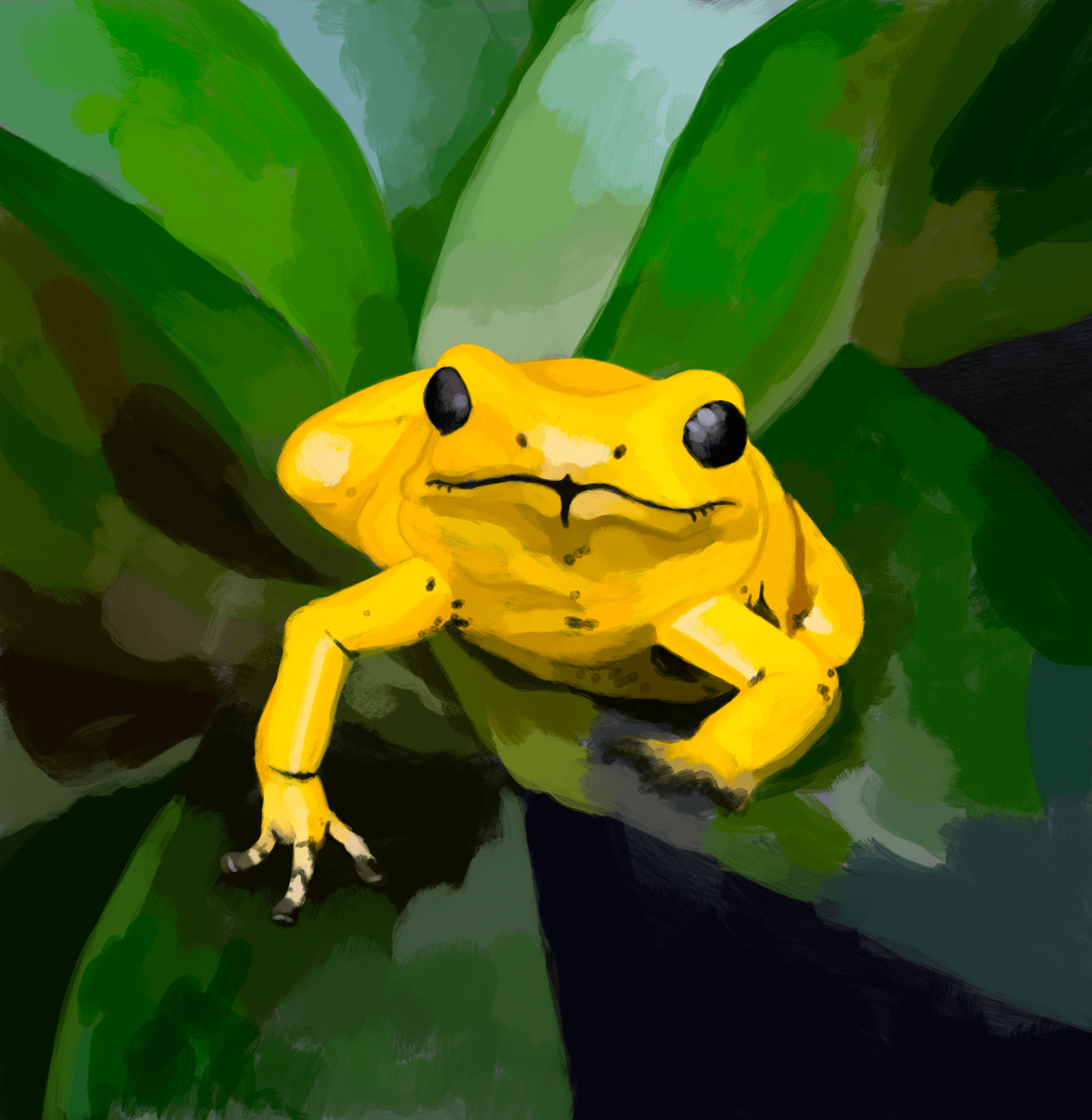Golden Poison Frog
Phyllobates terribilis or more commonly known as the golden poison frog is one of the largest species of poison dart frog, and is one of the most toxic animals currently inhabiting the planet. A single specimen has enough venom packed in its tiny two inch body to kill ten human adults, and the indigenous Emberá people of Colombia have utilized these amphibians' amazing natural defense mechanism to improve their hunting strategies.
Their brightly colored bodies range from shades of yellow, orange, and even pale green, all depending on their particular range across the hilly country of the Colombian Pacific coast. They use these bright colors to deter predators, using them as a single to convey that they’re unpalatable or poisonous. A tactic known as aposematic coloration.
While they may have an extremely fatal poison that secretes through its skin, the golden poison frog has no method of injecting it directly into its prey like the fangs of a snake or the sharp stinger of a scorpion. Instead the golden poison frog is a fearsome predator on the ground to invertebrates like flies, beetles, crickets, ants, and termites. While they prey on many insect species, they are not known to have many if any predators of their own except a species of small-frog eating snake Leimadophis epinephelus, that inhabits the same area as them. This snake however, seems to only be able to eat juveniles without any ill effects from their toxins.
During the rainforest’s rainy season, golden poison frogs start courting when they are around 18 months old. The males, looking for a receptive party, sit on a leaf and make buzzing or trilling calls. If a female is interested the pair will move to a more moist area such as a pile of leaf litter or under rocks. However, it’s not all sunshine and roses for every frog pair. Females will engage in aggressive wrestling matches over other males, and males will wrestle other males to defend their territory.
Unlike some other frog species who lay their eggs directly into bodies of water, the females of this species lay their eggs on the ground. When they hatch the males then carry the tadpoles on their back and take them to a larger body of water where after about 10-14 weeks metamorphosize into juvenile frogs called froglets.
While these spunky amphibians are said to live up to 10 years in the wild, many environmental threats shorten the lives of many individuals. The ICU lists this particular species as endangered on the red list. They are extremely vulnerable to habitat loss, which has come on by logging, gold mining, deforestation for agricultural development, followed by planting of illegal crops and pollution from farming, restricting their range only making populations in further danger.
As of 2012 the World Land Trust has raised money with the help of the company Puro, to build a reserve with the partnership of Colombian NGO, Fundación ProAves. As of today the reserve is protected by rangers funded through the World Land Trust’s Keepers of the Wild program, where they monitor and patrol the forest to prevent illegal hunting and logging.
References:
https://www.nationalgeographic.com/animals/amphibians/facts/golden-poison-frog
https://www.worldlandtrust.org/species/amphibians/golden-poison-frog/
https://www.worldlandtrust.org/appeals/keepers-of-the-wild/
https://www.aquariumofpacific.org/onlinelearningcenter/species/golden_poison_dart_frog
Submitted By KurimiTea
Submitted: 3 years ago ・
Last Updated: 3 years ago
